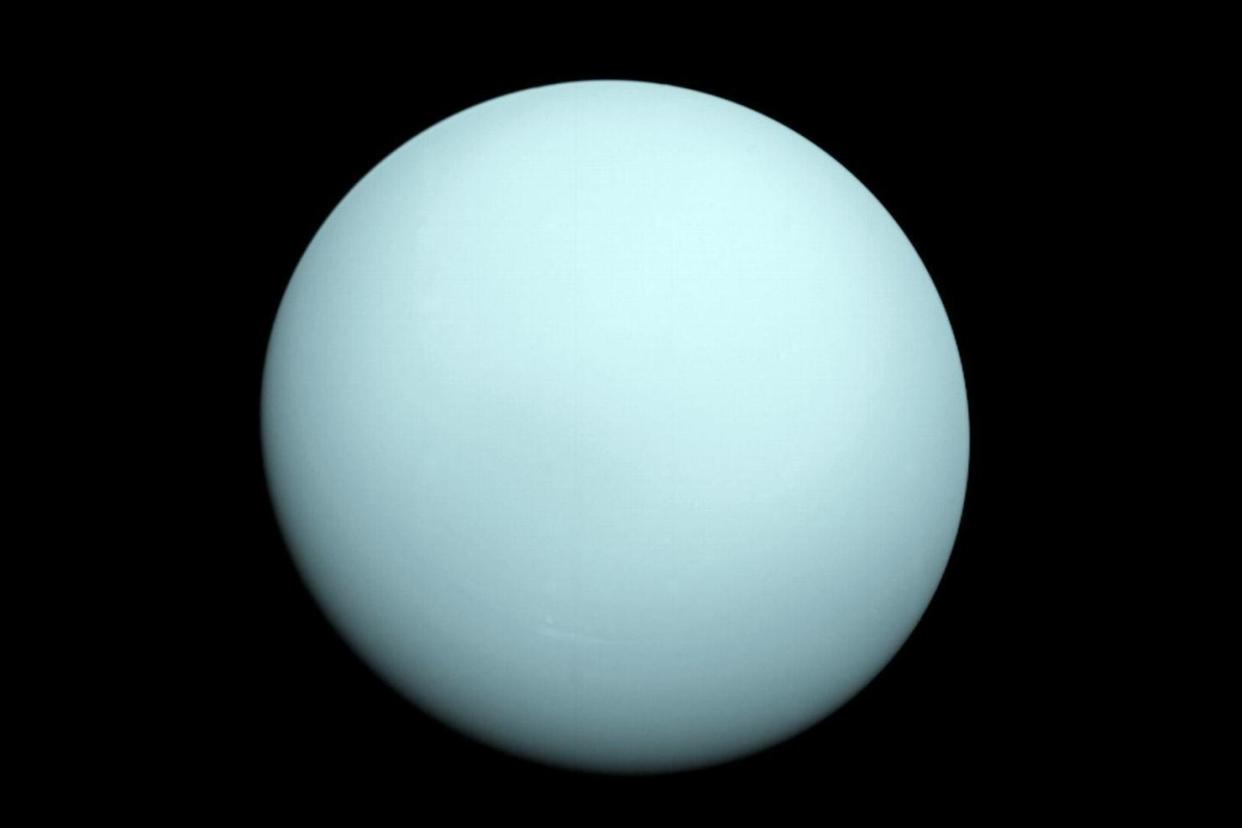Uranus will be visible from Earth tonight glowing blue-green in the sky

Uranus will be at its brightest and appear in the sky as a blue-green colour tonight as the planet reaches its closest point in its orbit to Earth.
The icy planet will be visible as a blue-green dot in the sky all night long and while spectators will be able to view it through binoculars or a telescope, NASA space station has said it may even be bright enough to see with the naked eye.
Uranus, named after the Greek God of the sky, will be visible in the sky over the UK tonight as it “reaches opposition”, meaning its directly opposite the sun and at its closest to Earth than any other time of the year, which makes it brighter.
Jane Houston Jones of NASA’s Jet Propulsion Laboratory said: "It's visible all night long and its blue-green colour is unmistakable.
"It may be bright enough to see with your naked eye and for sure in binoculars."
Uranus, the seventh planet from the sun, will be visible in the Pisces constellation and is expected to make its debut at around midnight.
How to spot Uranus
Find a good, rural star-gazing site with dark, starry skies and wait until after midnight
Friday morning, at 01:00am, is the best time to look, when the constellation Pisces appears directly south
Or, in light-polluted city skies, like in London, you can easily find Uranus by using binoculars or a telescope
Minimise the amount of artificial light you can see around you, to let your eyes adjust
Tom Kerss, an astronomer at the Royal Observatory Greenwich said: "In telescopes, Uranus always appears as a very small blob with a pallid green colour. Large telescopes can reveal some of its biggest moons, including Titania, Ariel and Oberon, all three of which are favourably placed tonight, relatively clear of the planet’s glare.
"Binoculars will easily show Uranus as a star-like point of light, perhaps with a hint of colour, which would otherwise be close to the limit of what the human eye can detect."
The view of Uranus is just one of the celestial spectacles that can be seen from the ground this month.
Saturn will appear in just a few days, sitting above the moon on October 23 and below it on October 24, according to NASA.
The Orionid meteor shower will also reach its peak on Friday with roughly 10 to 15 meteors visible in the early hours of the morning.

 Yahoo News
Yahoo News 
